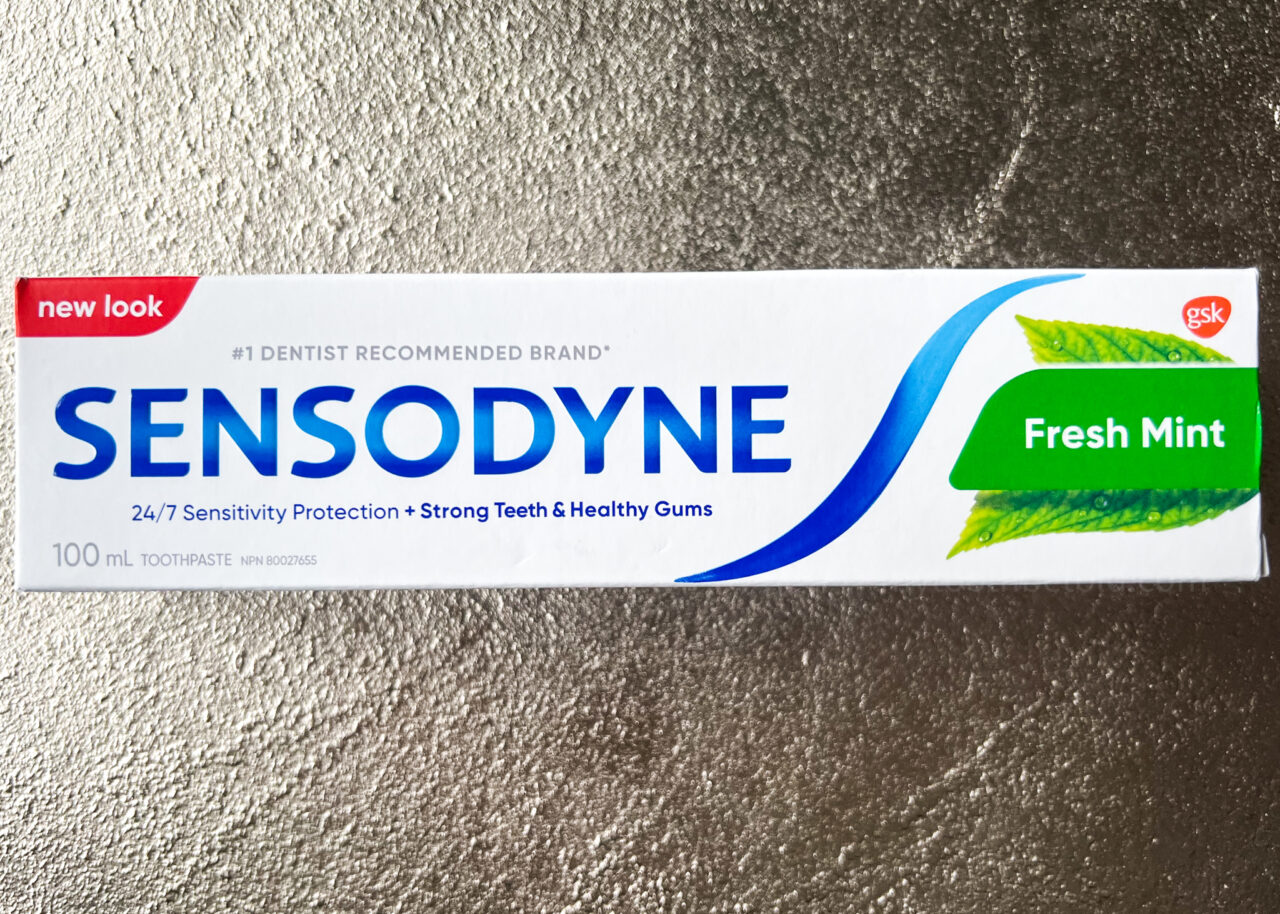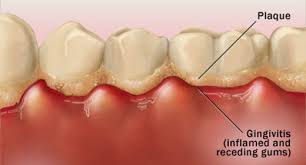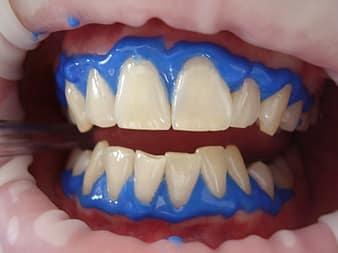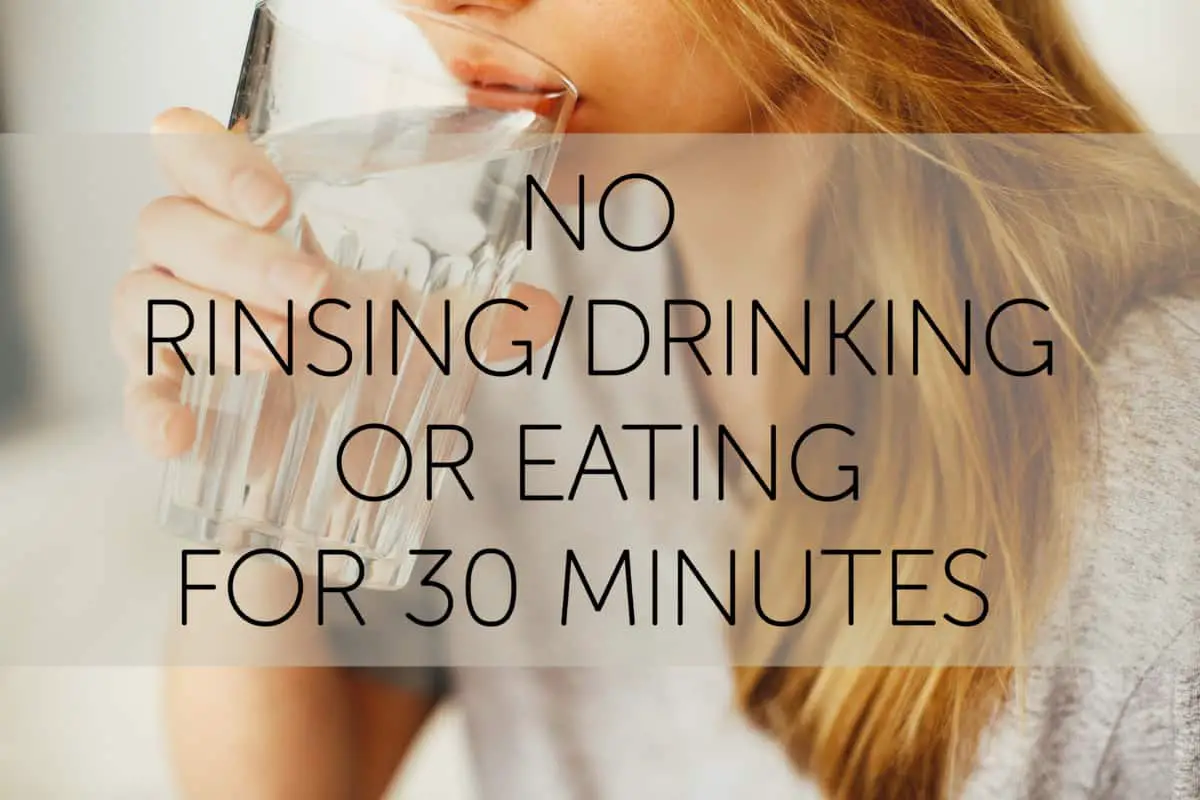
I have many patients who suffer from sensitive teeth and want to brighten and whiten their smiles. There are many ways to prevent and treat tooth sensitivity while whitening, but how do you do it?
Have your dental professional apply a desensitizing product and use toothpaste with potassium nitrate for at least two weeks before whitening and during treatment. Only use products containing hydrogen or carbamide peroxide or PAP+, as they are the only ingredients that whiten teeth.
In this post, I go over everything I go over with my patients in my dental chair when we talk about teeth whitening with sensitive teeth. I discuss how to prep your teeth before whitening to prevent the sensitivity in the first place (you’d be surprised how many dental professionals do not tell their patients these things).
I also cover how to manage sensitivity while whitening, what products are best, what products to avoid that can damage the teeth, and what you can do to achieve the best whitening results.
How to prepare your teeth for teeth whitening and prevent sensitivity
In this post, I will talk about whitening teeth in relation to changing the colour by chemically whitening teeth with peroxide, removing the intrinsic stain, and not removing surface stains through abrasive measures.
Prepping the teeth before whitening is vital in reducing tooth sensitivity during and after teeth whitening.
This part of teeth whitening is rarely discussed, even with dental professionals! I have talked with so many people who ask me about teeth whitening in social settings, and I bring up what I will tell you below.
People are shocked and wonder why they were never told this information by their dental professional, hence the creation of this post!
Below is the timeline that is best to follow to whiten your teeth if you have tooth sensitivity
At least two weeks before whitening
At least two weeks before whitening, it is essential to have your teeth cleaned and examined by a dental professional. This is to make sure the teeth and gums are healthy (free of tooth decay, broken teeth, and current restorations, such as fillings, are intact, and gum disease is not present), the calculus is removed to allow the gums to heal, and your questions about teeth whitening are answered.
When my patients with sensitive teeth want to whiten, I always recommend putting a desensitizing product on their teeth to prevent sensitivity right after I have cleaned them. This treatment can have lasting effects of up to 6 months.
Having your teeth cleaned before desensitizing treatment is essential to ensure the highest efficacy of the product.
If the teeth are not cleaned before teeth whitening, and there is still calculus (tartar)present on the teeth, it will prevent an even distribution of the whitening product, which creates an uneven result.
Another reason why it is crucial to have your teeth cleaned two weeks before whitening them is that it will help the gum tissue heal and shrink if you have existing gum inflammation.

When the gums are inflamed due to calculus (tartar) on the teeth, they become puffy, get bigger, and cover more tooth surface area. After the calculus is removed, the tissue will begin to heal and shrink (don’t forget to floss and brush to help with the healing process!) and expose more tooth surfaces to whiten.
*However, if you have root exposure, when teeth whitening, you want to avoid getting product on the root surface. This is important to avoid because it can create severe sensitivity. After all, the root surface is more sensitive than the crown of the tooth, where a helmet of enamel protects the under layers of the teeth.

After your teeth are cleaned, and a desensitizing treatment has been applied, use toothpaste containing potassium nitrate for at least two weeks. The best one is the Sensodyne Fresh Mint (Amazon Link). It has the highest available amount of potassium nitrate among all the other Sensodyne toothpastes.
(Amazon Link). It has the highest available amount of potassium nitrate among all the other Sensodyne toothpastes.
It is essential to use this toothpaste morning and night for two weeks, and I know this might sound weird if you are not used to it, but you don’t want to rinse your mouth out after using it or eat or drink for 30 minutes.
If you rinse your mouth out with water after brushing, you will rinse away all of the active ingredients in the toothpaste and get little to no results.
The toothpaste must sit on the teeth for at least 30 minutes to have full efficacy and provide you with the best prevention for tooth sensitivity.
My patients who started doing this had a significant reduction in tooth sensitivity!
If you want to learn more about the different types of Sensodyne, I wrote an entire post comparing each one for specific needs and how each one works differently, and it is linked below.
Read Now: What Sensitivity Toothpaste Works Best? Hygienist Compares
*Warning*
You may see online tricks to whiten your teeth with baking soda, or recipes to make your own teeth-whitening solutions. Please do not do this as they can damage your teeth and cause irreversible damage.
Always speak to a dental professional about teeth whitening.
How do you whiten your teeth without making them sensitive?
Now that I have covered how to prepare your sensitive teeth for whitening taking specific steps during whitening can also help prevent and stop sensitivity.
If you have your teeth whitened in one sitting by a dental professional, these steps may not be relevant because the whitening is done in a couple of hours.
If you have your teeth whitened this way, in one sitting, it must be performed by a licenced dental professional, not someone at the mall or shopping center.
But the dental professional will prep your teeth before whitening and put a protective barrier on the root surfaces and the gums to help prevent sensitivity and irritation to these surfaces in the mouth.
How to prevent tooth sensitivity during teeth whitening
During teeth whitening (using take-home trays or whitening strips), you can do a few things to help manage tooth sensitivity.

- Keep using your sensitive toothpaste containing potassium nitrate and do not rinse, eat or drink for 30 minutes after brushing.
- Use Sensodyne rapid relief for specific areas (rub and dab into the tooth for one minute (each tooth) to get the best results.
- If you are using custom trays, you can line them with toothpaste and put them in your mouth for at least 30 minutes.
- Avoid triggers; hot and cold food/drink, sugar, cold air outside
- Use post-treatment relief gel (you can ask your dental professional if they can provide this for you). It is a more concentrated formula to provide more relief than toothpaste.
Click the link below for a more in-depth explanation of the above list!
Read Now: Teeth Whitening Zingers: How to Prevent or Stop Sensitivity
After teeth whitening, tooth sensitivity; how to manage
Continue with the tips included in the list above to help manage tooth sensitivity after whitening.
Depending on the method used to whiten your teeth, sometimes zingers can occur (sharp nerve pain from the teeth) and can last up to a few days after the treatment.
Below is a link to a post I wrote explaining Zingers, and I touched on how to get rid of them.
Read Now: What Causes Zingers After Teeth Whitening? Hygienist Explains
Another way to prevent sensitivity while teeth whitening is to use a product that will not cause a lot of sensitivity in the first place.
Different teeth whitening methods for sensitive teeth; dental hygienist approved
A newer technology has been created by HiSmile called PAP+ teeth whitening strips.
HiSmile claims that this product does not cause tooth sensitivity, which is incredible!
I tried this product myself (I am not sponsored or affiliated with HiSmile). Below is the video I made documenting my teeth whitening journey and what I felt in terms of tooth sensitivity. And I share my results using a shade guide to see how much whitening I got!
I also wrote a post on this product, detailing the science and providing you with a thorough review. It is linked below.
Read Now: Does Hismile PAP+ Work to Whiten Teeth? Hygienist Explains
Is there a whitening-sensitive toothpaste?
I will always advise my patients, family and friends to avoid whitening toothpaste at all costs. They do not change the colour of your teeth. Instead, they use abrasives to wear away the surface stain that is on top of the tooth surface.
Whitening toothpaste for sensitive teeth is just something I would never use or recommend.
Some kinds of toothpaste include a peroxide ingredient and claim that it will change the tooth colour but below are my thoughts.
If the toothpaste does include hydrogen or carbamide peroxide, it is not enough to make a difference.
Think about it… when you have your teeth professionally whitened or you use a stronger product, for example, Crest Whitestrips, we avoid getting any of the product on the gum tissue because it can bleach the gums and cause irritation.
If you are using a whitening toothpaste, it is coming into contact with the soft tissue in your mouth repeatedly and has no effect on the colour of the gums.
Whitening mouthwashes, gum, and floss also don’t work. Don’t waste your money.
How to whiten sensitive teeth naturally
The one natural way to whiten your teeth is to practice preventative measures. Unfortunately, there is no way to whiten your teeth naturally, as there needs to be a chemical reaction to physically change the colour of the teeth.
Should I brush my teeth before using whitening strips?
Before using whitening strips, floss and brush your teeth without toothpaste. Removing all food debris and mature plaque from the teeth is essential as it can create a barrier and cause unevenness in the product’s result. Brush teeth with toothpaste after using whitening strips.
Below is an in-depth post I wrote about brushing and what to do when using whitening strips.
Read Now: Do You Brush Your Teeth Before or After Whitening Strips?
If you are going to whiten your teeth, I hope you get the least amount of sensitivity and that this information I provided with you helps!
Holly 🙂

